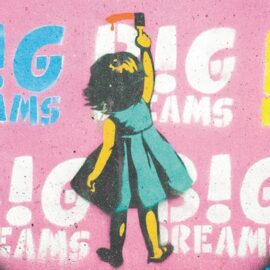

This article is an excerpt from the Shortform book guide to "What Color Is Your Parachute?" by Richard N. Bolles. Shortform has the world's best summaries and analyses of books you should be reading.
Like this article? Sign up for a free trial here .
What is the Parachute book? How can you answer the question, “what color is my parachute?”
The Parachute book is more formally known as What Color Is My Parachute? by Richard Bolles. It offers a practical guide for searching for jobs or changing careers.
Keep reading if you want to answer “what color is my parachute?” and get a better understanding of the Parachute book.
The Parachute Book: Overview
In What Color is Your Parachute?, career expert Richard Nelson Bolles (1927-2017) shares insights from over 40 years working in the career development field.
(Shortform note: The title of the Parachute book was inspired by a joke. When the author was told in a meeting that some people in his organization were “bailing out,” he wrote “what color is your parachute?” on a blackboard to remind himself to address the subject. Neither the parachute nor its color is a metaphor for the job-hunting process.)
The Current State of the Job Market
Since the 2008 recession, many aspects of the job-hunt have changed—jobs take longer to find, don’t last as long, and involve technology. However, certain aspects of the job-hunt haven’t changed. There are still plenty of jobs available, and job-hunting is still fundamentally about compatibility between an applicant and an employer—both parties have to like each other.
What Job Should You Try For?
The first step to finding a job is to focus on yourself—what do you want to do? You can research career options online and take assessments and tests, but the most effective way to find out what kind of job you’d like is to self-reflect using the flower exercise.
The flower exercise involves looking at yourself from seven different angles: compatibility with people, workplace conditions, skills, purpose, knowledges, money, and location. In the exercise, each angle will be visually represented by a flower petal. When you’ve finished the exercise, you’ll end up with a one-page diagram of your flower that contains a visual summary of your personality as it relates to your career:
Finding a Job With the Parachute Book
Now that we have a better sense of who we are and what we want, we’ll use this knowledge to find work. There are two approaches to finding a job, and the second is far more effective:
- Traditional. This approach involves starting with the job market—searching for job postings online, sending out resumes, using employment agencies, networking, and so on.
- Parachute. This approach from the Parachute book involves starting with yourself—using your flower diagram to determine which careers match your interests and conducting informational interviews to learn more about potential careers and companies. Only then do you start looking for a job.
There are five steps to using your flower diagram:
1. Determine possible career paths. Write your top three knowledges and five skills on a sheet of paper and show the list to people you know and ask them what jobs or fields your list points toward. Ideally, speak to some people working within your knowledges. For example, if one of your knowledges is gardening, speak with a gardener.
2. Research possible careers. In step 1, someone might have told you about a job that sounds perfect, but you won’t know if it really is perfect until you learn more. Therefore, the next step is to conduct informational interviews with people who are currently doing the job. Ask them how they got into the field, what they like and don’t like about it, how much training the job requires, what some related careers are, and who else you might talk to.
3. Find out what organizations hire for the job. Brainstorm broadly. For example, if you want to be a teacher, you’ll think of schools, but also consider things like corporate training, military bases, ESL associations, and so on.
4. Find out what specific companies hire for the job. Make a list of companies that you think look interesting (regardless of whether or not they have open positions). To do this, keep talking to people—friends, family, and informational interviewees—and look online using search engines and LinkedIn.
5. Research specific companies. It’s important to research companies for two reasons: 1) to learn about an organization’s culture, working style, mission, and how you can be an asset to them, and 2) to determine if you would like working for that company. To research, look online, read company materials, test-run companies by signing up with a temp agency or as a volunteer, and keep conducting informational interviews.
Ideally, after going through the five-step process, you’ll have discovered the existence of a job that meets the requirement of multiple petals. However, if that job is completely different from any jobs or fields you’ve worked in before, you might have trouble securing it because you have no experience.
In this situation, the best course of action is to move into your dream job in two steps—first, switch fields, then, switch job titles, or vice versa. For example, if you’re an architect and you want to become a music teacher, instead of going directly to a music teacher role, find a stepping stone job such as designing soundproof practice rooms so you can gain experience in the field.
Working for Yourself
Another option for a career change is to start your own business. Some people want to start a business because there’s something in particular they want to do; others simply want to work for themselves.
If you don’t know what kind of business you want to start, follow these four steps:
1. Brainstorm. Review your flower diagram, your resume, make lists of things you like and are good at, and search online.
2. Research. Learn how to start and run your own business. There are many online resources such as Free Agent Nation and federal small business tips.
3. Assess your skills. Find out what skills you need to run a business by conducting informational interviews. Then, compare the skills to your flower diagram to figure out what you’re missing. Either learn the missing skills yourself or find someone to help.
4. Solicit feedback. Talk to your partner about your business idea—a business will affect her too. Once you’ve considered her feedback and everything you learned during the above three steps, make your decision.
The Parachute Book Advice for Staying Motivated
Sometimes it takes a long time to find a job. No job-hunting strategies work 100% of the time, and sometimes the odds are stacked against you—for example, by law, a company might have had to post an opportunity publicly, but privately, always intended to hire the owner’s son.
If your job hunt isn’t going as well as you’d hoped, it’s important to manage:
- Depression. It’s normal to feel depressed or discouraged when you’re unemployed and job-searching, but there are some things you can do to alleviate it, such as taking care of your physical health, connecting with others, using the time to learn and explore, and practicing gratitude.
- Bias. Employers are people and, therefore, they have biases, but all employers are unique individuals. If one employer doesn’t hire you because they think you’re too old, undereducated, or inadequate in some other way, focus on what you’re capable of, keep up the search, and you’ll eventually find something.
- Shyness. When you’re enthusiastic and excited about something, you forget to be shy. To cure shyness, practice having conversations with people about subjects you’re passionate about.
Hire a Career Coach
If you want personalized help with your job search, the Parachute book notes that you can hire a career coach. It’s best to stay away from firms because they’re often scams.
There are three steps to finding your ideal career coach:
1. Track down three coaches. Research career coaching online and ask people you know for recommendations. Churches and schools sometimes have free options available.
2. Set an initial appointment with three potential coaches. Ask them about their program, their experiences, their certification, their success rate, their fees, and their contract, if they have one. Some red flags: they’ll do all the work for you, they don’t have much experience, they claim a 100% success rate, and they charge a fee upfront (often scams).
3. Assess. If you liked one of the coaches, sign up with them. If you didn’t, for any reason, find another three and repeat the process again.
Cater to the Job Market
So, what color is my parachute? Each of us is the only one that can answer that. The parachute approach involves learning about yourself and then finding or creating a job you’ll enjoy. However, if you’re desperate, you can try starting with the needs of the job market. There are certain jobs, called hot jobs, that researchers think will see a lot of growth and new opportunities. Use the Occupational Outlook Handbook or other projection sites to find out what they are.

———End of Preview———
Like what you just read? Read the rest of the world's best book summary and analysis of Richard N. Bolles's "What Color Is Your Parachute?" at Shortform .
Here's what you'll find in our full What Color Is Your Parachute? summary :
- How to not just find a job, but find a job you love
- Why traditional resumes don’t find you the right job
- The 7 steps to identifying your ideal career






